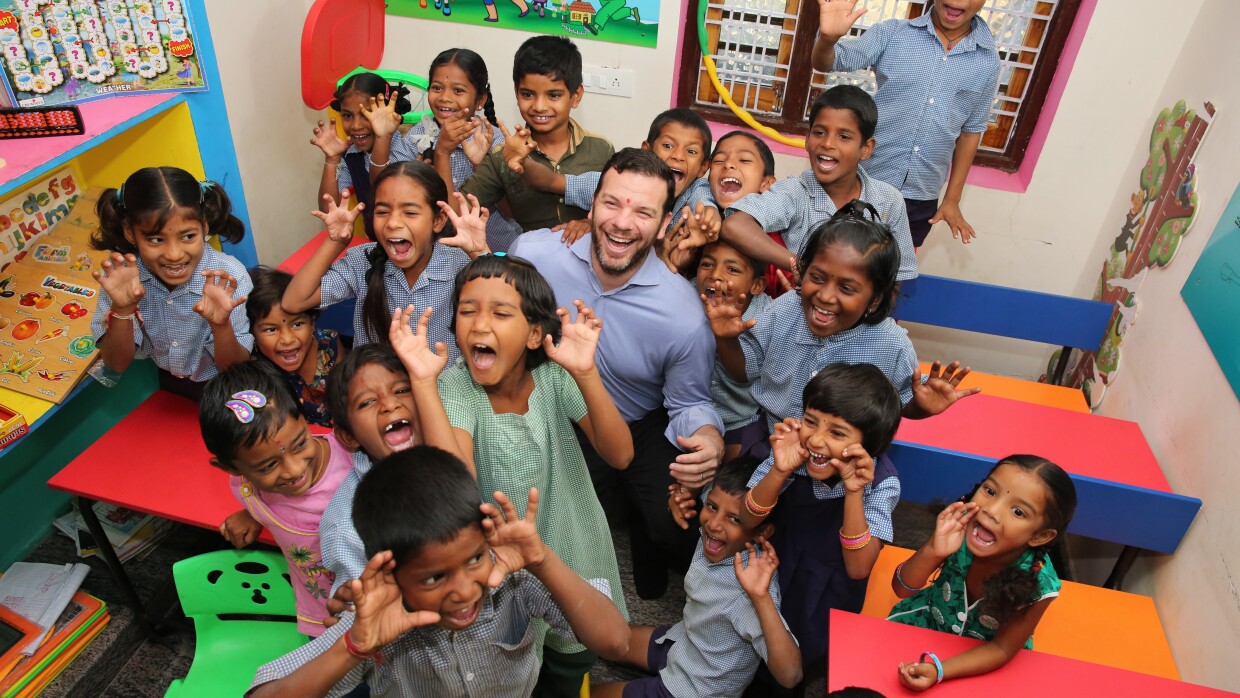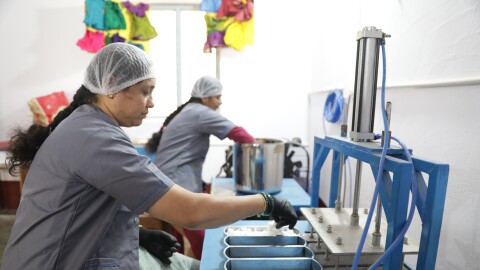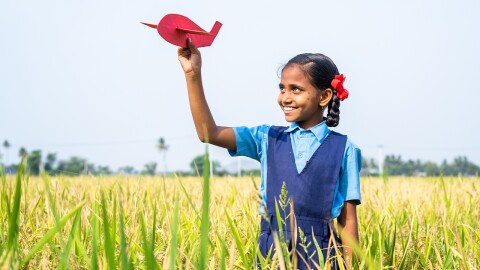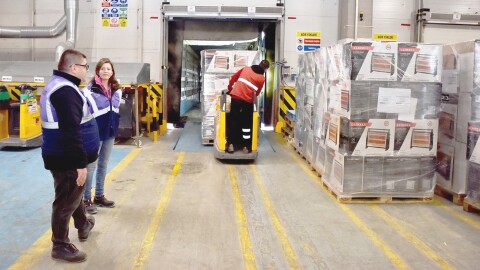In several communities in the vicinity of Amazon Fulfillment Centres in India, women folk continue to be relegated to household chores, with almost no avenue to earn livelihoods and learn skills. But things are slowly starting to change. They say that when a woman is educated and empowered, it causes a ripple effect for the generation that follows. We see this in action every single day at Amazon Community Centres around the country.
Amazon India has built Community Centres near its Fulfillment Centres around the country. Usually on the outskirts of metros, these centres are platforms for anyone from the community to come together, learn basic skills like computers, sewing, access the Internet and other digital education aids like LCD screens, DVD players, and e-content.
Women of the community often frequent Amazon Community Centres and that has opened many doors for them.
From basic livelihood skills to digital learning A large part of the social initiatives at the Amazon Community Centres focuses on empowering women through skill development and providing exposure to learning tools. Skills include everything from sewing and reading to basic math and computer training that makes them employable for banks, shops, and local businesses. This in turn, ensures financial freedom not just for the women but also their families.
I started with basic stitching and sewing. Today, I run my own business. My life, and that of my children, looks nothing like what it did just a year ago. For once, our future looks bright. I couldn’t be more grateful!
One such example is the story of Meena, a young widowed mother of three from Haryana. Meena found out about the Amazon Community Centre from an erstwhile employee. She met the coordinator and learned more about the skill development opportunities the Centre offered. Soon, Meena polished her basic sewing skills and started stitching bags and blouses for customers. But she didn’t stop there. She brought more women from the community into the fold, taught them what she had learned on the Community Centre sewing machines, employed them full-time, and progressed, together with other women in the community, into a small-scale entrepreneur. Today, Meena actively contributes to her household income, pays for the education of her three children, and is a truly strong and empowered woman in her community.
Encouraging Education among Community Children
This is just one of the many stories of empowerment from Amazon Community Centres. From educating young girls through the Early Childhood Development Programs to basic English language training, Amazon Community Centres are transforming the lives of women and in the process, uplifting entire communities. Amazon has focused on digitization of several government schools, which has helped check dropout rates and raised school grades among students. Digitization has also helped improve the teacher-student ratio of government schools and facilitated self-study for students with the help of various learning tools. These community education programs also conduct regular workshops on reading and writing, mathematics and computer learning. Amazon has so far worked with 40 schools, benefiting 3,637 students and 120 teachers.
Innovative Science Labs
Children at the quiet village of Bhiwandi, Maharashtra, discovered a whole new world of science and learning with the arrival of Pandurang Bhoir, a state level trainer in Innovative Science models. Bhoir was brought in as a subject expert by Amazon to set up his ‘Innovative Science Lab’ for village children. With the help of Amazon, such science workshops were conducted across village schools last year to familiarize children with topics like air pressure, water pressure, magnetic energy and gravitation through simple experiments. This year, 1,700 students have already attended 15 innovative science workshops across community schools.
Mini Planetarium
The Mini Planetarium was established in April 2017 with a dedicated teacher to manage the project. The planetarium has a 3D projector to help students observe the night sky and learn about outer space and celestial bodies. For effective learning, the sessions are conducted in Marathi. The planetarium has a seating capacity for about 15-20 students, and is equipped to train students from 150 schools in the area. The planetarium has been accessed by 320 students and teachers from 16 schools.











